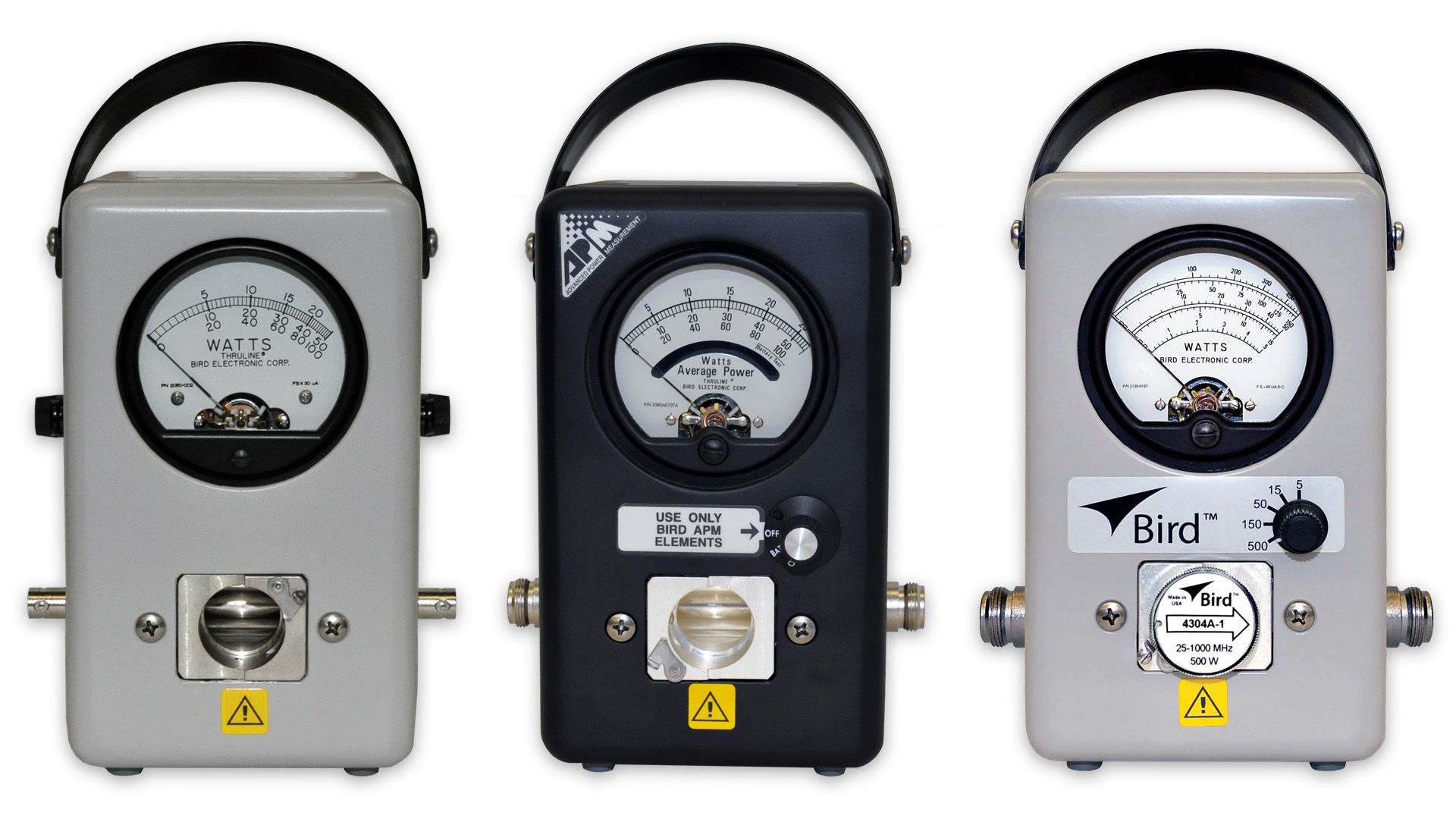
Search for topics or resources
Enter your search below and hit enter or click the search icon.
October 3rd, 2025
2 min. read
By Katie Wright

If you’re under 40, chances are you’ve grown up with terminating power sensors - USB-connected, compact, and precise. They’re fast, accurate, and fit right into today’s digital workflows. But before these became the standard, RF engineers had to fight for reliable power readings. And the tool that changed everything? The Bird Model 43 Wattmeter.
Before the Model 43: Guesswork and Estimation
 In the early days of RF, there was no direct way to measure transmitter output power. Engineers had to measure the AC mains power going into the transmitter and then calculate the expected RF output based on efficiency. If the transmitter was 70% efficient, they assumed 70% of the input power made it to RF. In reality, the numbers were often wrong.
In the early days of RF, there was no direct way to measure transmitter output power. Engineers had to measure the AC mains power going into the transmitter and then calculate the expected RF output based on efficiency. If the transmitter was 70% efficient, they assumed 70% of the input power made it to RF. In reality, the numbers were often wrong.
It was slow, inaccurate, and frustrating—but it was the only option.
A Green Revolution in 1952
That changed in 1952 when J. Raymond Bird introduced the Model 43 Thruline® Wattmeter. For the first time, engineers could directly measure forward and reflected RF power in the field. No more estimates. No more guesswork.
The Model 43 was also unique because it required no batteries or external power. It was powered purely by the RF signal passing through it. Long before “green design” became an industry focus, the Model 43 delivered a simple, sustainable, maintenance-free solution that just worked—year after year.
The Secret to Its Longevity
The genius of the Model 43 was its modular design. Interchangeable plug-in frequency elements gave it precision across nearly the entire RF spectrum.  Rotate the element, and engineers could instantly switch between forward and reflected power without shutting down their system.
Rotate the element, and engineers could instantly switch between forward and reflected power without shutting down their system.
This combination of accuracy, ruggedness, and simplicity made it the workhorse of RF measurement. More than 1 million units have been sold worldwide, and it’s still in production today. That’s not just longevity—that’s legacy.
Why It Still Matters
For younger engineers, the Model 43 might look “old school,” but it represents something bigger: the turning point when RF measurement became direct, portable, and reliable.
Every power meter or USB RF sensor you use today can trace its roots back to the Model 43’s groundbreaking concept: make power measurement direct, portable and unshakably reliable.
It gave engineers confidence in their systems—and that confidence built industries.
Bird Transforms Again: The 4480A Digital Wattmeter
Just as the Model 43 redefined RF measurement in 1952, Bird is once again leading the way with the 4480A Digital Wattmeter.  But this time, engineers have the power of microprocessors on their side.
But this time, engineers have the power of microprocessors on their side.
With the Model 43, engineers read forward and reflected power, then had to perform calculations to determine VSWR, return loss, or reflection coefficient—critical indicators of RF system health. With the 4480A, those numbers are instantly calculated and displayed. No math. No guesswork. Just clear, actionable data at a glance.
The 4480A also goes further than its predecessor ever could. In 1952, engineers were working with analog transmitters and relatively simple waveforms. Today’s world is filled with complex digital modulations and high-speed communication standards. The 4480A is designed to handle them, delivering the same Bird reliability across both traditional RF systems and modern digital infrastructures.
In short, where the Model 43 gave engineers their first true window into RF power, the 4480A offers a panoramic view—forward power, reflected power, VSWR, return loss, and waveform integrity—delivered instantly, accurately, and without extra steps.
Bird changed RF measurement once before—and with the 4480A, it’s doing it again.
Seventy years ago, the Model 43 wattmeter made RF power measurable and trustworthy. Today, the 4480A carries that same DNA into a new era of precision and digital intelligence. The standard didn’t just survive - it evolved. And the name on that standard is still Bird.
Katie Wright is Vice President of Product Marketing and Strategy at BirdRF, a leader in RF power measurement. With an engineering background and deep industry knowledge, she develops growth strategies that expand opportunities and strengthen brand visibility. Katie combines technical expertise with strategic leadership to help BirdRF deliver innovative solutions that keep customers ahead in RF technology.